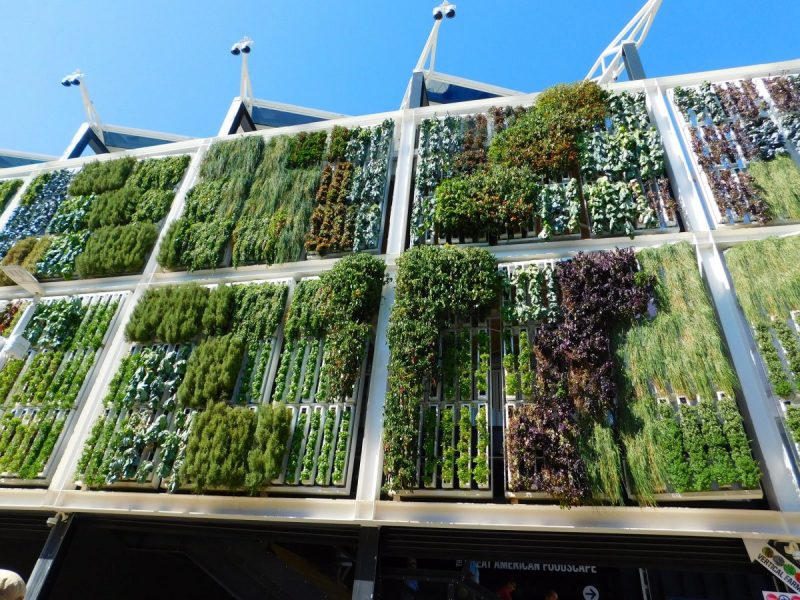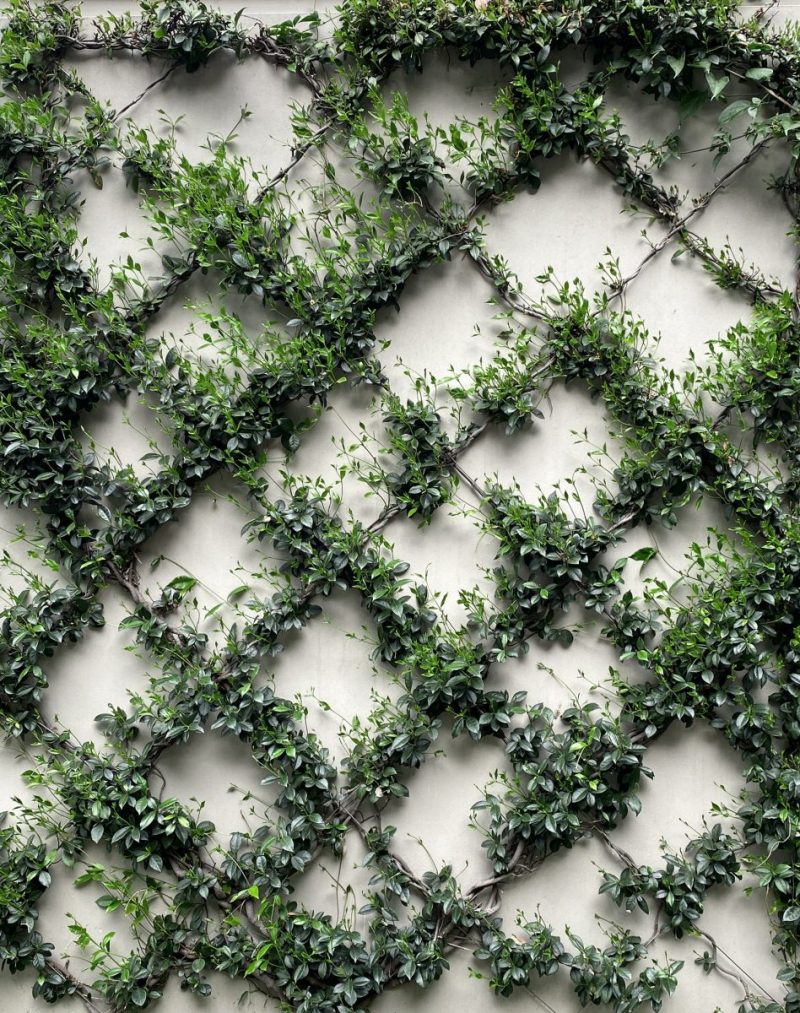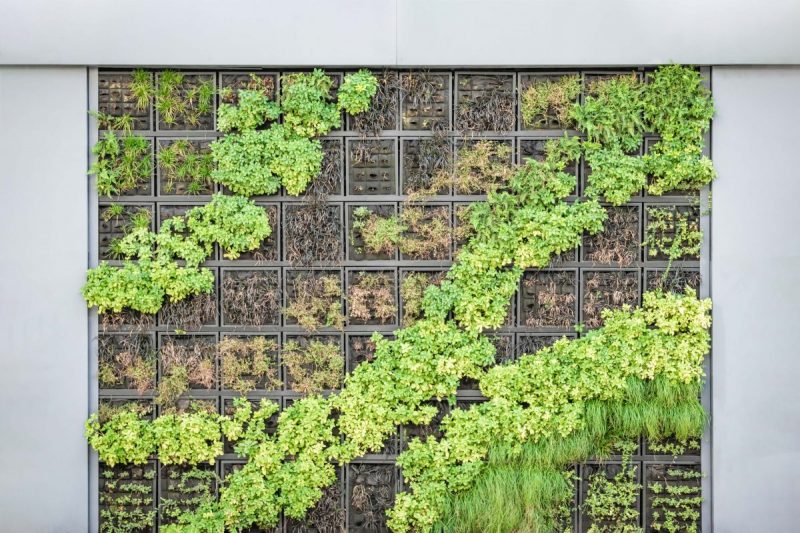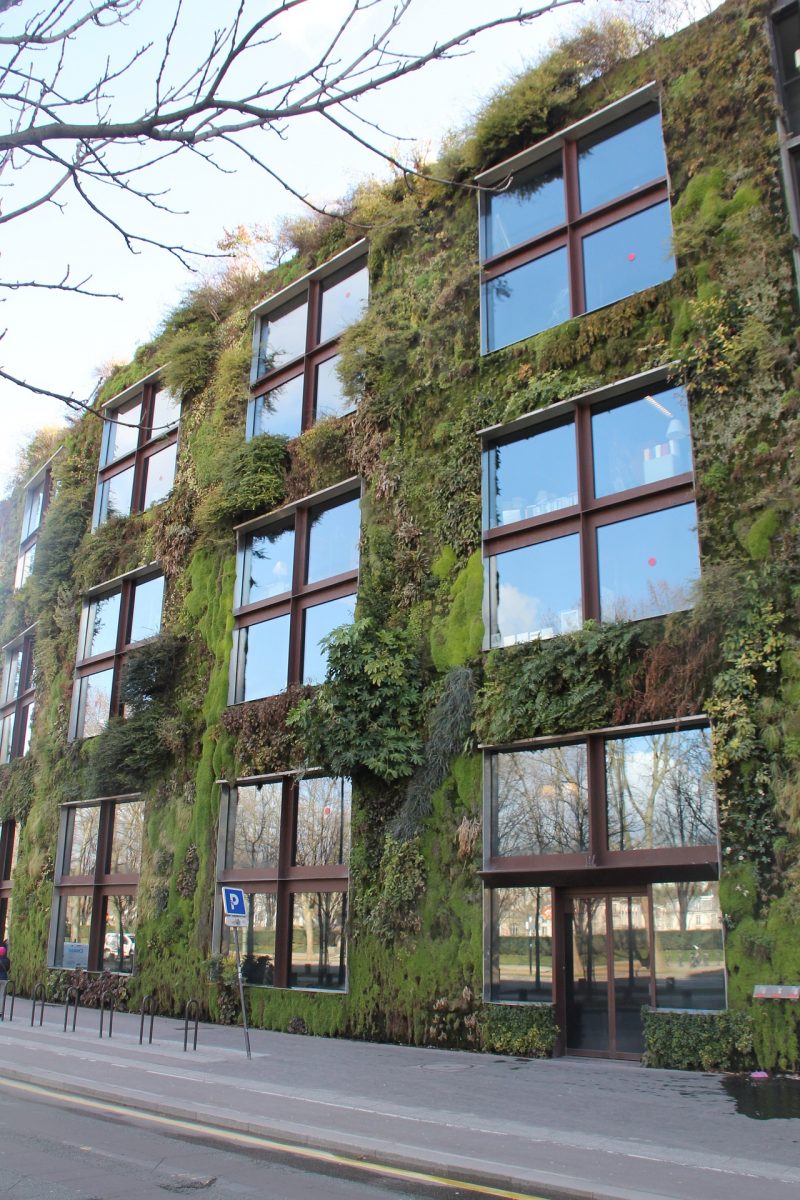Vertical gardens and plant nutrition
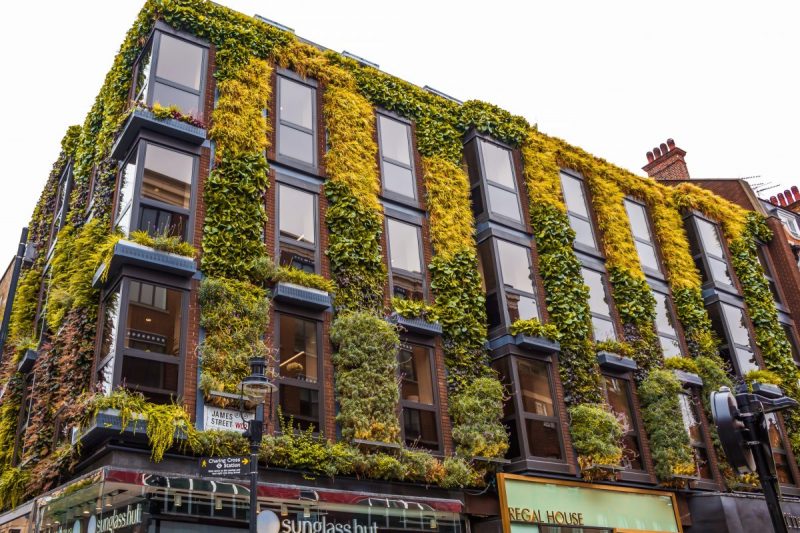
Vertical gardens, such as green walls, represent solutions for overpopulated, polluted urban areas, where the density of built elements does not allow the set up of horizontal green spaces.
The concept of vertical gardens encourages the increase of the number of urban green spaces, including both outdoor and indoor vertical gardens. However, factors such as the difficulties of maintaining a green wall or the high costs prevent their spread on a large scale.
Patrick Blanc is the one who created the first hydroponic green wall, replacing the soil with a nutrient solution, in 1988. His creations have as support a vertical structure made of metal, PVC and a very corrosion-resistant felt with high capillarity, which allows a uniform distribution of water. Green walls can also be made of plants placed in containers that are to be mounted on the wall support, in crates or on structures of wickerwork. All these types of green walls can be set up both indoors and outdoors.
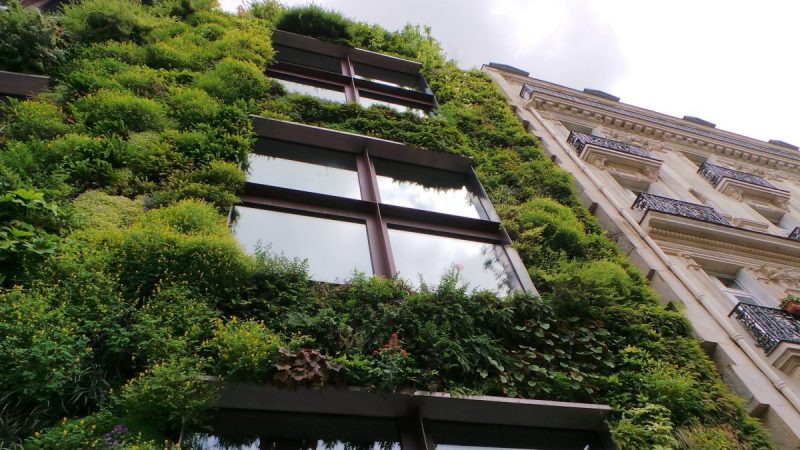
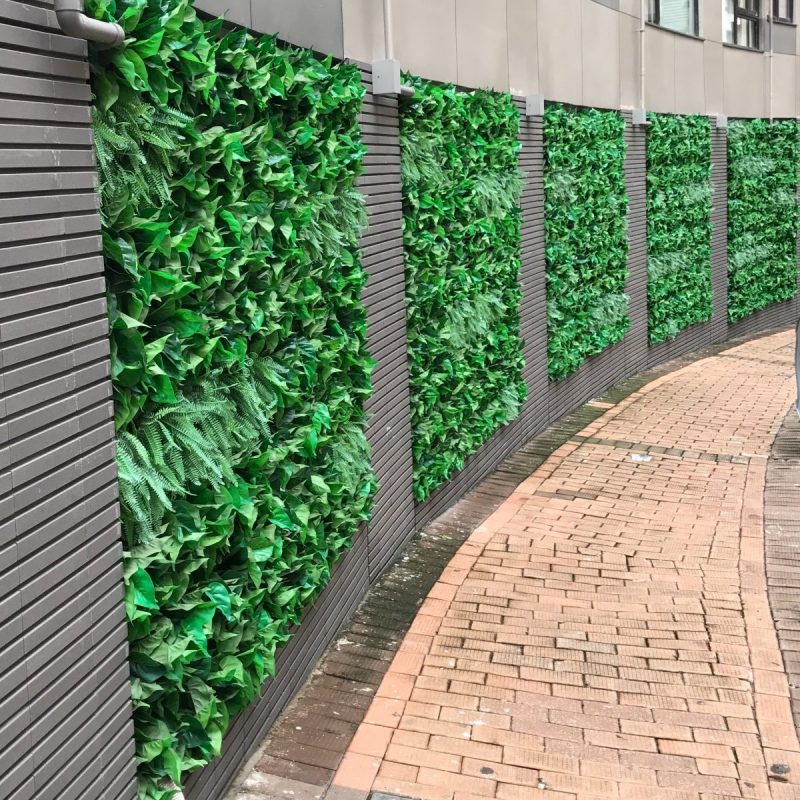
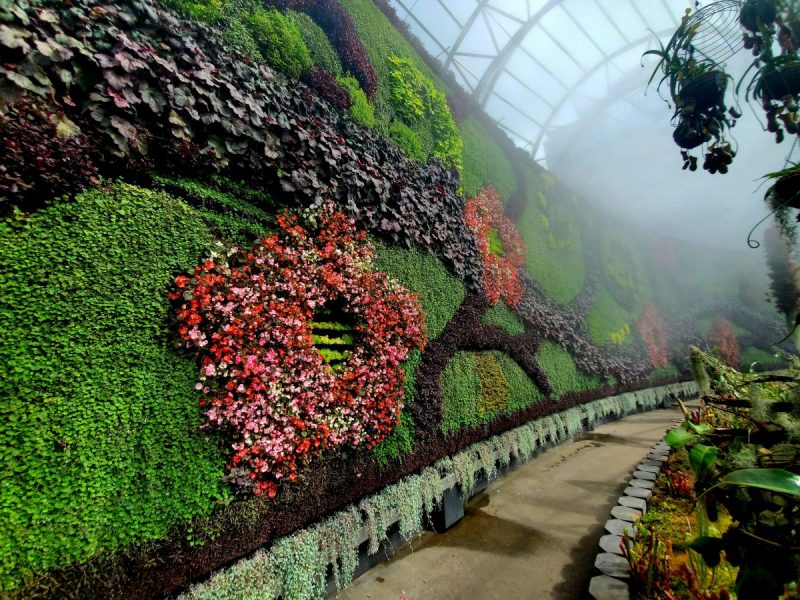
Vertical gardens – Benefits
Besides their importance from an aesthetic point of view, they have an essential role in reducing noise pollution, plants being able to reduce sound through absorption and diffusion. Also, green walls are very good insulators and represent an alternative for the polluting insulation methods with polystyrene. At the same time, they allow the reduction of energy consumption while heating the buildings. They reduce heat from urban areas through evapotranspiration, improve air quality and encourage urban biodiversity. At the same time, an increase in the number of birds was observed in the areas with green walls, being a source of food and shelter for them.
Designing a vertical garden
Designing a vertical garden after studying its requirements is essential for reducing maintenance costs. As in the case of horizontal gardens, the plants require regular pruning, treatments with stimulants, inhibitors or growth regulators to increase their tolerance to stress factors, but also to maintain the plants at the desired shape, height and weight.
The irrigation system is indispensable in any vertical garden, it provides water and nutrients for plants. For a sustainable green wall, water can be recycled or collected after rainfall.
Choosing plants for vertical gardens
In the case of the external walls, the plants are chosen according to the orientation of the wall and the climate of the area. It is recommended to use as many endemic species as possible, as they are the most resistant to climatic conditions. It has to be taken into account that the plants that will be placed on the topside of the wall will benefit from different conditions of light, wind and humidity compared to those on the lower side.
In the case of interior walls, it is very important to understand the microclimate conditions and the plants’ need for light, which could require artificial lighting. In general, the plants chosen are epiphytes, lithophytes, ferns, succulent, herbs or climbing plants. For interior design, clones obtained by in vitro propagation are often used, due to the homogeneous appearance and equal development of the plants.
Plant nutrition
A very important step in setting up a garden is knowing the needs of the plants. This involves their nutritional regime, but also the stimulants and inhibitors.
For proper growth and development, besides water, the plants require a varied range of mineral substances.
Depending on the amount of nutrients present in the plant, they are divided into:
- macro elements (C, O, H, N, P, K, S, Ca, Mg, Fe, Al, Cl, Na, Si);
- trace elements (Mn, Zn, Cu, Br, B, Mo, Ni, Sn, Sr, Ti, Ba, F, Co);
- ultramicroelements (U, Ra, Pb, Hg, Ge, Ag).
Recommended products
-
You can find products on a different store
Change Store -
You can find products on a different store
Change Store -
You can find products on a different store
Change Store -
You can find products on a different store
Change Store -
You can find products on a different store
Change Store -
You can find products on a different store
Change Store -
You can find products on a different store
Change Store -
You can find products on a different store
Change Store -
You can find products on a different store
Change Store -
You can find products on a different store
Change Store -
You can find products on a different store
Change Store -
You can find products on a different store
Change Store -
You can find products on a different store
Change Store -
You can find products on a different store
Change Store -
You can find products on a different store
Change Store -
You can find products on a different store
Change Store -
You can find products on a different store
Change Store -
You can find products on a different store
Change Store -
You can find products on a different store
Change Store -
You can find products on a different store
Change Store -
You can find products on a different store
Change Store -
You can find products on a different store
Change Store -
You can find products on a different store
Change Store -
You can find products on a different store
Change Store
Factors that influence the absorption of nutrients
The minimum temperature at which absorption begins is 2-4°C. If for the plants in the temperate zone the optimum thermal comfort is 20-25°C, for thermophilic plants this optimum is 30°C.
Light plays an essential role in photosynthesis. Photosynthesis results in the energy that is necessary for the active absorption of mineral substances.
The degree of aeration of the substrate visibly influences absorption. A reduced aeration of the soil decreases the capacity of protein synthesis in the roots.
The soil pH plays a very important role. The acid pH slows down the absorption. However, the presence of Ca ions in large quantities helps plants to assimilate nutrients better. The alkaline pH is harmful, because plants cannot absorb Fe, Mn, B and Zn ions, which transform into insoluble forms. In general, the alkaline pH of the soil is more difficult for plants to withstand than the acid pH.
Other factors that influence the absorption of elements are the species, age, and membrane selectivity. It is also important to state that the application of small doses of fertilizers during the vegetative growth period is more effective compared to massive, unfractionated fertilization.
Substances used to stimulate plant growth
- Auxins – they are natural compounds, which, in extremely low doses, can affect the growth and development of plants, respectively the formation of vegetative and generative organs. Auxins are present in very low concentrations in different plant organs. These are found especially in the organs of active growth: buds, roots, young leaves, stem tips, pollen, fertilized ovary, cotyledons and immature seeds;
- Gibberellins – they are natural stimulators of plant growth and development. Gibberellins circulate in plants from the places of synthesis (embryos of germinating seeds, young leaves, apical buds, floral organs, root tips) to all plant tissues. Gibberellins activate the growth of plant tissues, acting on the metabolism of growth hormones and determining their accumulation in the tissue;
- Cytokinins – they are bioactive compounds, which stimulate cell division. They have been identified in several plants, but also in moss, fungi and bacteria.
Substances used to inhibit plant growth
Natural inhibitors are present in different doses, in buds, seeds, leaves, bulbs, tubers. They have the ability to reduce or cancel the activity of stimulants and to stop the plant’s growth, until dormancy. The main endogenous compounds are: the beta inhibitor, abscisic acid, phlorizin, coumarin and scopoletin.
The inhibitors have antiauxinic, antigibberellic and anticytokininic effects. They maintain the dormancy of the plants, being present in the meristematic tissues. They accelerate the aging of tissues and the decomposition of chlorophyll. At the same time, it favors the falling of the leaves and fruits, it interrupts the synthesis of nucleic acids and proteins, inhibits the germination of seeds by inhibiting cell division and the growth of the root system.
Substances used to temporarily reduce the growth rate of plants
These substances differ from plant stimulants and inhibitors because they do not irreversibly block the vital metabolic processes of the plants.
They are not found in plants, being synthetic products. By applying them in the form of foliar treatments, they are integrated into the metabolism of the plant and manifest as substances with antiauxinic and antigibberellin action. After application, they reduce the division and extension of cells for a period of time.
Treatments with these substances in the differentiation and elongation phase will stop the growth processes of stems and shoots, especially at the level of the internodes. The result of the administration consists in obtaining vigorous plants of good quality, with short internodes, thickened stems and rich lateral ramifications. They also stimulate flowering, by interfering with the transformation of vegetative buds into generative buds. At the same time, they increase the plants’ resistance to unfavorable factors, such as low temperatures, drought, heat, salinity, diseases and pests, by improving the adaptation potential.














































































































































































































































































































































































































































